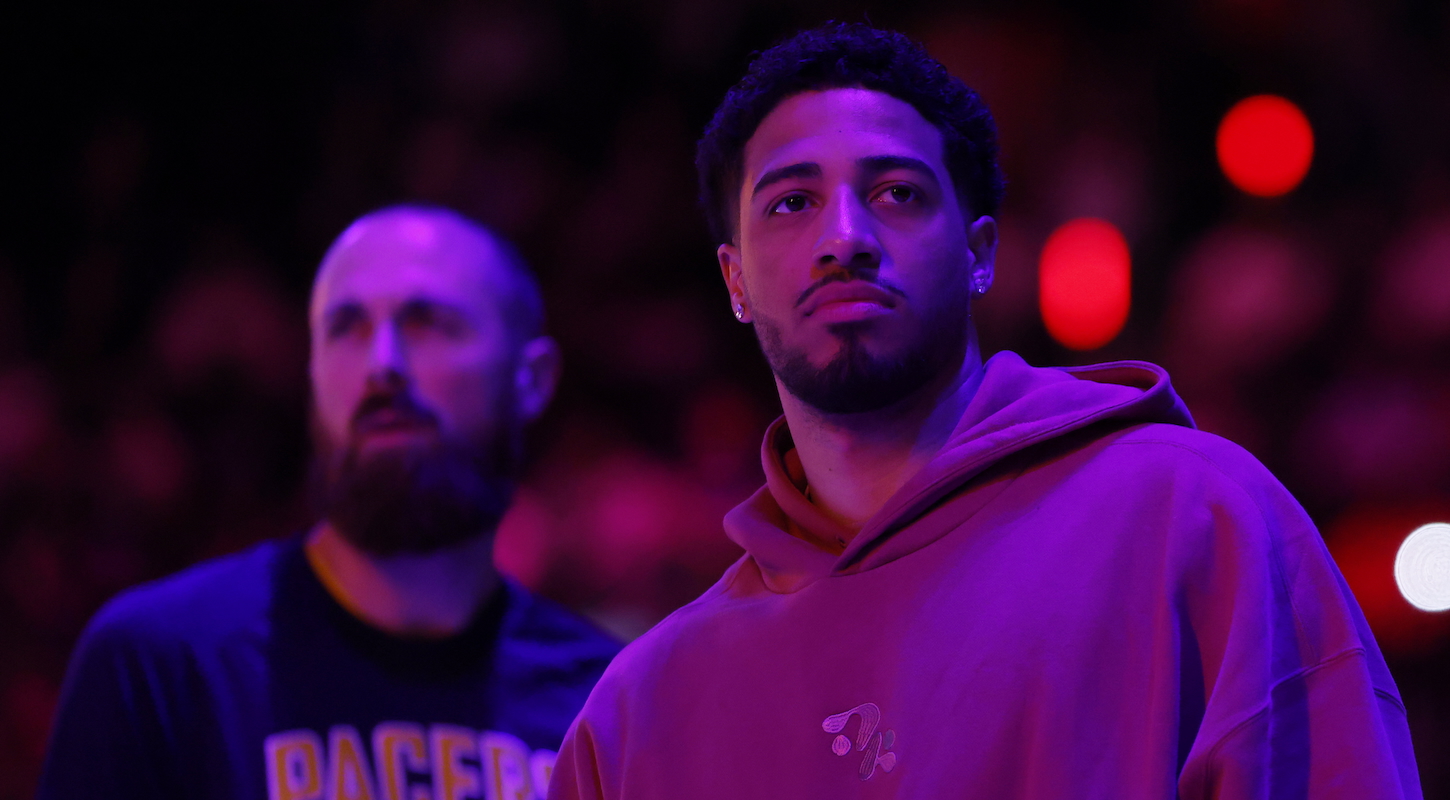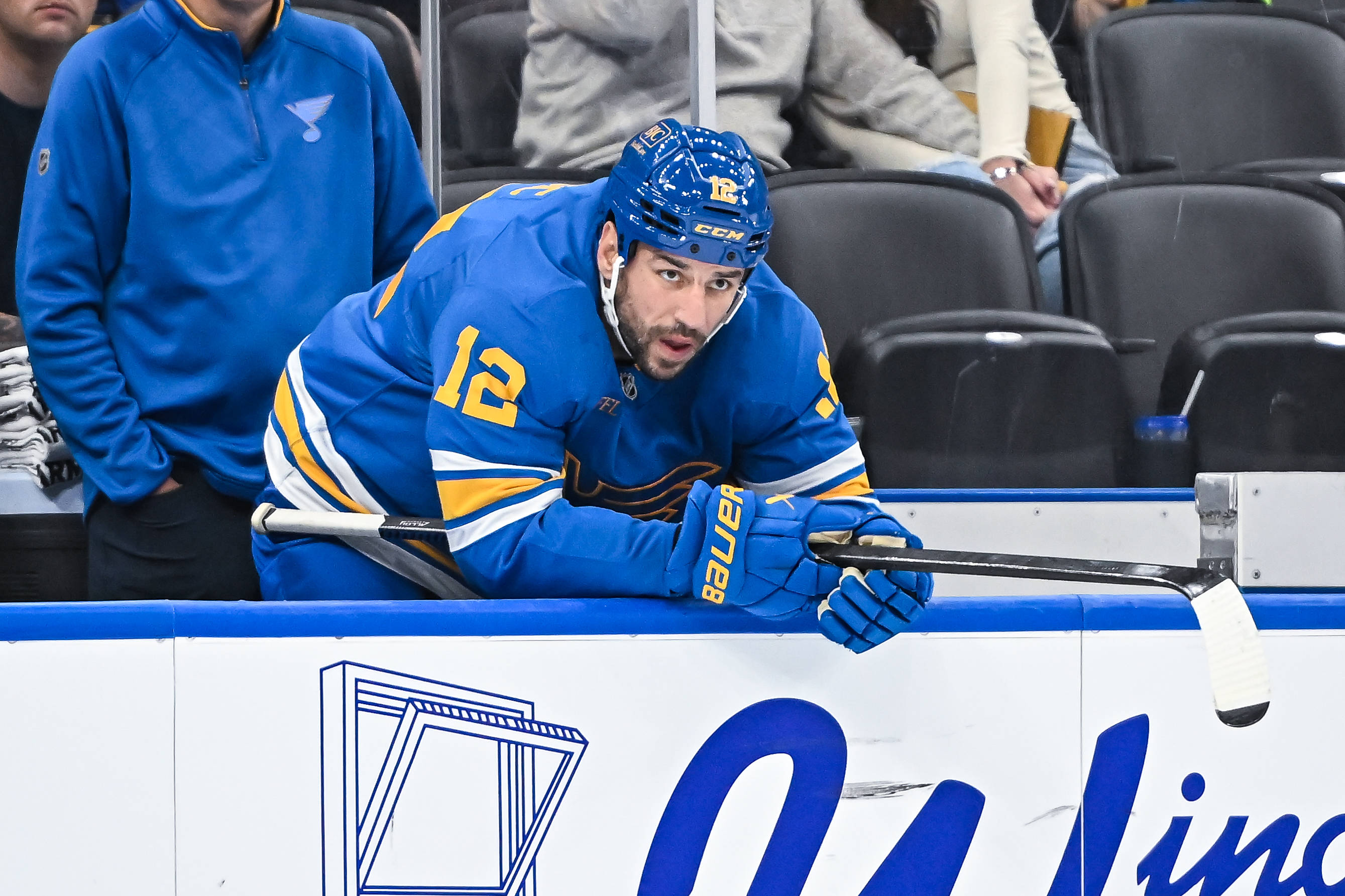Welcome to What Is This USMNT Guy’s Deal, a regular series in which Defector selects a name from the myriad number of exciting young American soccer men playing in Europe and answers the question: What is this USMNT guy’s deal?
The rarest and most deterministic trait of a soccer player is not tactical awareness, nor field vision, nor synergistic team play. It's not passing range, or shooting range, or dribbling ability, or physicality, or positioning, or tempo, or playmaking, or an understanding of space. What really matters is: Are you a Real Hooper? There's no rubric for a Real Hooper, you simply have to apply the Potter Stewart test. It's not even a measure of quality, merely a sense of whether the player in question is a Big Freak. Some of the best players in the world are not even Real Hoopers. I will shut up and introduce this week's Guy with an instructive example.
With the USMNT down a goal to Costa Rica in the 25th minute, Tim Weah switched play to the right side with a big pass to Yunus Musah. Everyone shifted over and awaited the opening of a new line of attack, which came slowly. Sergiño Dest trotted a few steps back to collect the ball, took one touch to his left, and unleashed a pure and true rocket into the top corner. It was a perfect connection, the sort of ball a player hopes to hit maybe once or twice in their career. A close re-watch of the highlight confirms that Dest did all this with his shoelaces untied and flopping all over the place. That's all the proof you need. Sergiño Dest is as Real of a Hooper as there is.
Who Does He Play For?
Dest is in his second season with Barcelona, a club mired in profound financial and, well, soccer crises. He's held firmly onto his starting spot for most of his time in Catalonia, toggling back and forth between the two full back spots as needed, though mostly playing right side. The club bought Emerson Royal this offseason, ostensibly to improve their depth at the position. Dest would have faced more competition for playing time and had to deal with the ensuing instability and chatter—other huge teams reportedly wanted him—though Barcelona's financial woes solved his problem for him. As it stands, he's been somewhat uneven for Barça, though it's clear he belongs. He's scored twice in the league and once in the Champions League. For now, he seems like he'll be a part of whatever young core the team builds around as it (hopefully) emerges from the wreckage.
Dest made his name during his one full season at Ajax, where he spent his youth career. He was a revelation. An 18-year-old Dest quickly out-shined established fellow academy product Noussair Mazraoui, though his rawness prevented him from fully snatching away the starting job. It was no matter. Once the world got to see how preternaturally comfortable he was on the ball in tight spaces, the biggest clubs in the world in need of a right back wanted him. Dest ultimately turned down Bayern Munich for Barcelona, and the rest is history in the making.
Dest was born in Amsterdam to a Surinamese-American serviceman father and a Dutch mother, and he spent his whole life in the Netherlands. (He first stepped foot in America in 2014.) A U.S. youth national team coach called Ajax in 2016 to ask about a different player when they discovered by chance that Dest had an American passport. Once the coach ate the tape, he called up Dest and the youngster leapt at the chance to join the U.S. U-17s. The Dutch federation made a late push for Dest to join the Oranje once it became clear he was a star on the rise, but by that point, he already had 15 caps with U.S. youth teams, and he chose the U.S. in late 2019. He's ours now and forever; the haters are invited to get over it!
The Weston McKennie Mamma Mia Test
The Weston McKennie Mamma Mia Test refers to the following foolproof heuristic for determining whether or not a U.S. player is actually good or just good by our rosy American standards: Do fans tweet lovingly about them in their local language?
Oye Sergiño Dest es una putisima locura. Que escándalo está siendo por la banda. Ha sido un fichajazo.
— Puyi (@PuyiFCB) March 21, 2021
How Does He Play?
Dest began his career as a forward, and it shows. There are very few full backs in the world who can slither through multiple defenders, or keep possession in tight spaces, or build attacks like Dest can. Most of the superlatives we apply to USMNT guys are contingent. Konrad de la Fuente is a terrifying screamer on the flank, for a 20-year old in Ligue 1. Yunus Musah gobbles up space and runs by midfields, better than any player in the U.S. pool. But there's no need to apply such qualifiers to Dest's game. The things he can do with the ball at his feet are genuinely world class. His highlight reels are nasty, and they show a player with a natural verve with the ball and a stunning set of instincts in crunchy scenarios. Even when borne down upon by three defenders, Dest seems to float and move more calmly than everyone around him. It's honestly spooky at times.
He's a fine passer, especially with short stuff. His crossing is nothing special, particularly because he weirdly doesn't seem to know how to take open space in front of him. It's almost like he needs to have a defender close to him to really feel comfortable. Dest's defending game mirrors his attacking game in some respects; he's good when running and reacting, using his speed, strength, and guile to stop counters and one-on-ones, but he's a major liability in traditional, static defensive scenarios. The USMNT was only down a goal and in need of some magic the other day because Dest had mis-defended a play in the first minute that led to Costa Rica's opener. Dest was moved back from the midfield to full back because, as an Ajax youth coach said, he didn't have the tactical wherewithal to handle that much responsibility:
"Sergino was very talented, but he found it difficult when he had to think about tactical things," [former Ajax youth coach Gery Vink] says. "He had a lot of talent, he was fast, very good both feet, and very good in attack. But mentality is also a talent, and his coaches had a lot of problems with his attitude, his behaviour. He was special. I had a lot of talks with him, and a lot of fights and discussions about what is needed to get to the top, to be a star. Sometimes he said no, just that — ‘I won’t do it. No, I don’t like it, I won’t do it’."
The Athletic
This is why Barcelona (well, a fully realized version of Barcelona) is an ideal spot for him. Dest's utility to a team scales with how reliably they can dominate the ball. A lesser team would require their right back to do more defending and stay further back, where Barcelona can make use of what Dest is actually great at. The more Dest has to do boring stuff like track back (ugh), put out fires (gross!), and stay pinned to an attacker (gah!!!), the worse he will look and the more everyone will get mad at him. If he's allowed to fly, he looks like a killer. For better and worse, he's a Real Hooper.
Wonderteen Index
The Wonderteen Index is a holistic, objective metric that analyzes a player’s full array of skills and talents, distilling it all into a single number that corresponds to their ultimate potential and the likelihood that they will assume the title of Wonderteen.
Dest will soon turn 21, but also, he does outrageous swaggy shit with the ball every game and it looks so casual and he moves so effortlessly that I'm hesitant to give him anything less than a 19.7 out of 20.
His ceiling is obvious: he could be one of the best five full backs in the world, like, next year. What's nice about Dest is that the stuff he needs to work at is learnable stuff. He has a technical sensitivity that you can't teach, and his position is not one that demands an unbelievable amount of tactical nuance, though he absolutely needs to learn where to stand on defense.
I don't see any reason why he won't improve as he gets more experience, though, especially because that technical ability will make it hard to keep him off the field. The only question is how much better he can get. Last season at Barça, Dest played a lot as an extremely advanced wing back, which freed him from much of his defensive work and allowed him to play more or less like a forward, which is where he's best. That Barça has played most of this campaign with a back four is something of a gift and a curse for Dest—a curse because he's at times been exposed for his positional indiscipline as part of the back line, a gift because getting more time and experience there is probably how he'll reach his fullest potential.
Can He Play Right Back?
The U.S.’s European corps is absolutely silly with right backs, enough to stock a full XI. And so it is important to determine whether or not the USMNT guy of the week can play the position.
Billy observed at some point that Dest would absolutely have been converted to a central attacking midfielder or a forward if he grew up in the U.S., simply because his technical ability would have been so much more advanced than any of his peers and his coaches naturally would have wanted to get him on the ball as much as possible. It's a good thing for his club fortunes that he plays right back, where he has a real niche. Anyway, yeah. duh.
Show To Me A Cool Highlight
How Does He Fit In With The U.S. Team?
Dest was pretty clearly the team's best player in this most recent World Cup qualification window, and Gregg Berhalter has made a point of using Dest as much as he can. The version of a 4-3-3 with a midfield more concerned with covering ground than creating attacking chances means Dest and Antonee Robinson have more freedom to get forward and more creative responsibility when they do reach the final third. That's perfect for Dest, who showed over the past couple weeks that a winning USMNT can be built around him as its primary playmaker.
Playing with a winger in front of Dest means the full back can join attacks from the inside, where he really likes to operate. He looked as comfortable as he ever has during the Jamaica and Costa Rica games, and he created the U.S.'s winning goal by hitting a sprinting Tim Weah. "Sergiño is an interesting player, because it’s almost like the sky’s the limit for him," Berhalter said after the match. "He can be as good as he wants to be."
Right back is famously a position of depth for the U.S. team, but guys like Reggie Cannon, Bryan Reynolds, and DeAndre Yedlin won't be anywhere near the starting lineup if Dest is healthy. There's nobody who can compete with him, and as the U.S.'s most recent pair of wins made obvious, the more involved he is the better.
How Close Is He To The Hypothetical Best XI?
He has to start! The more interesting questions here are who plays on the right side with him and who backs him up. Dest played with Paul Arriola in the first game and Weah in the second, and did his thing with both players. A fully fit U.S. team might feature Aaronson, who likes to roam more, or maybe even Gio Reyna, who likes to play inside, over there. Yedlin has been getting most of the backup minutes behind Dest, though Joe Scally is playing so well for Borussia Mönchengladbach that you'd have to think his chance is coming soon. Either way, no matter who's in front of him or behind him, Dest is one of the most important players on this team and he has to be on the field when it matters.







